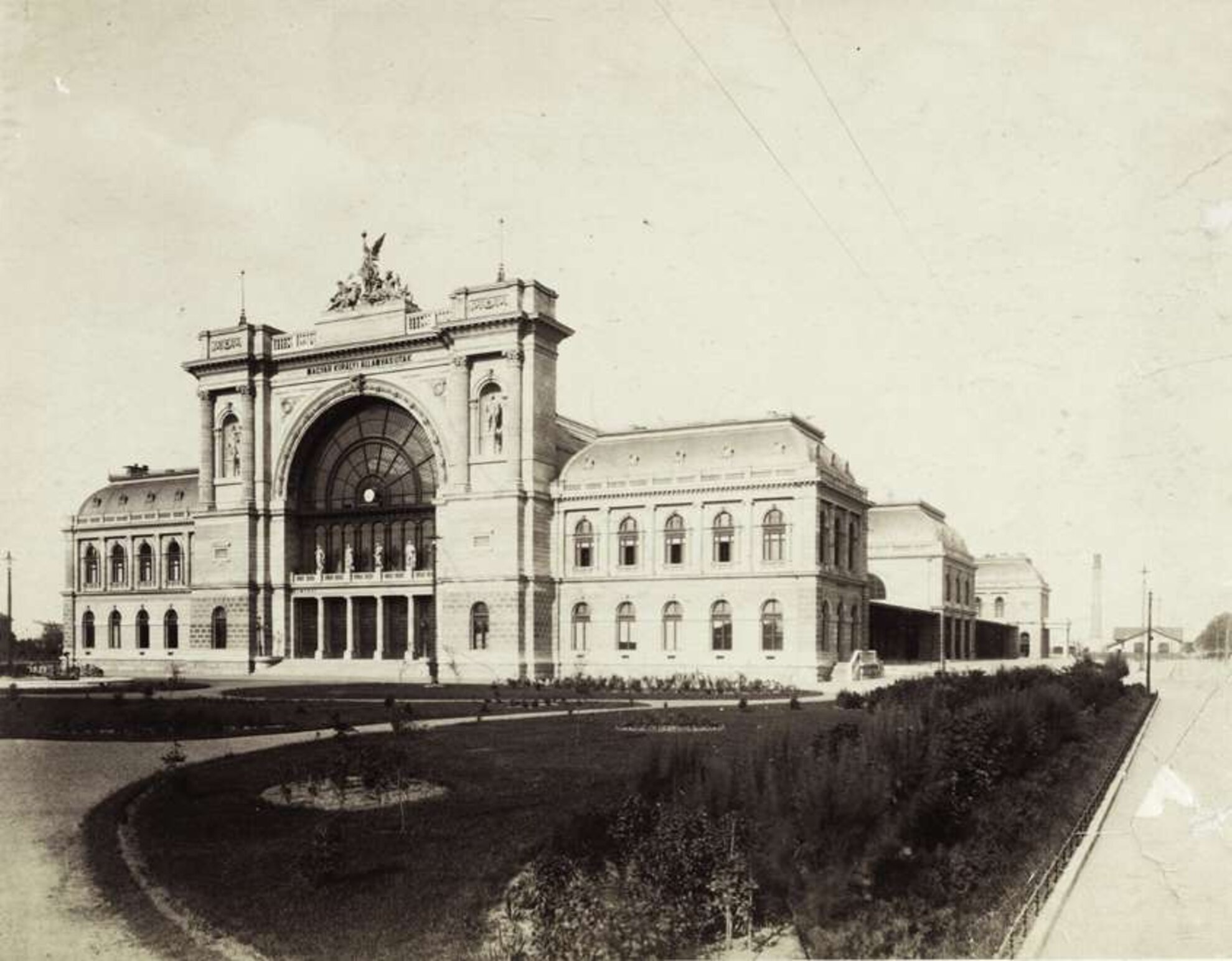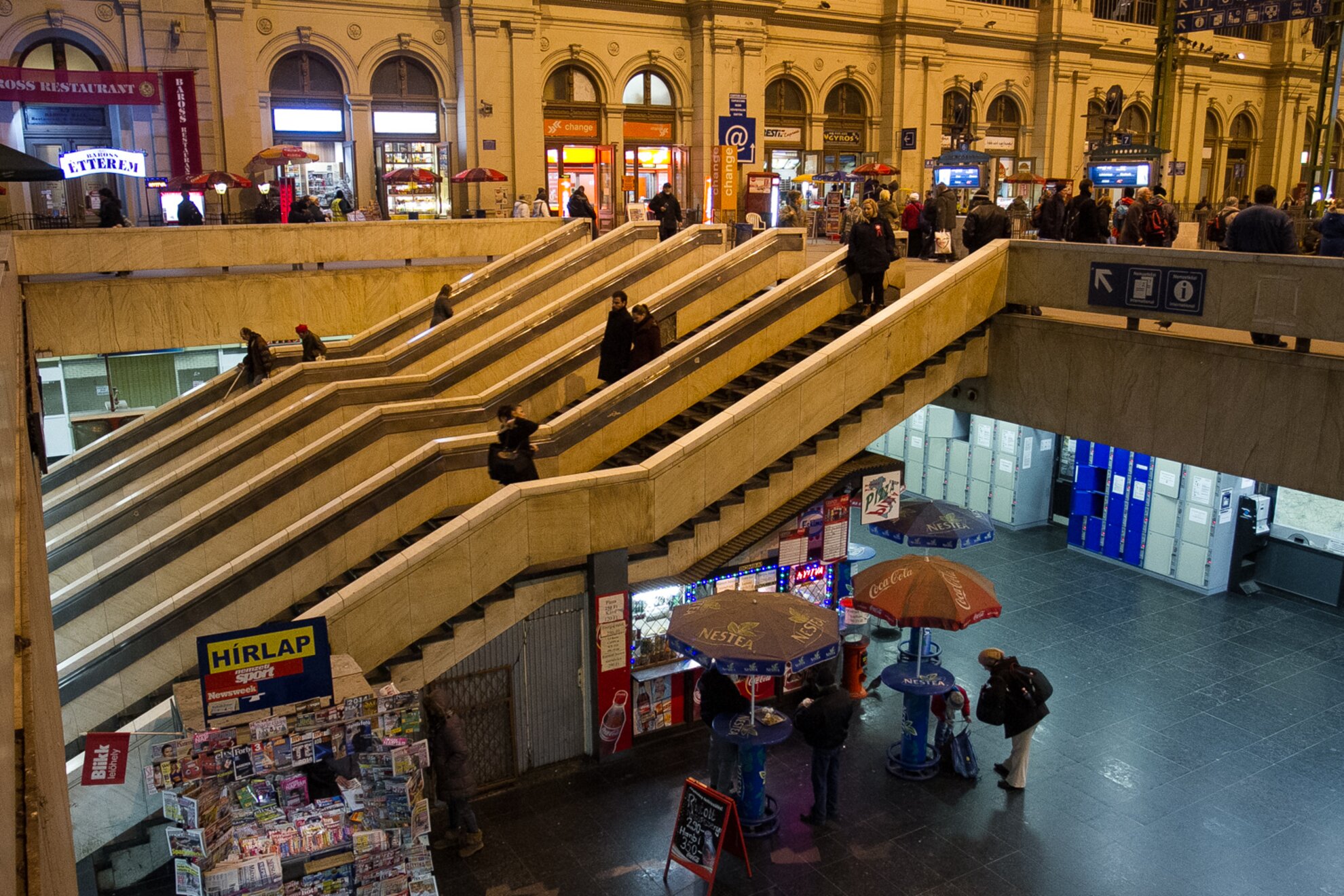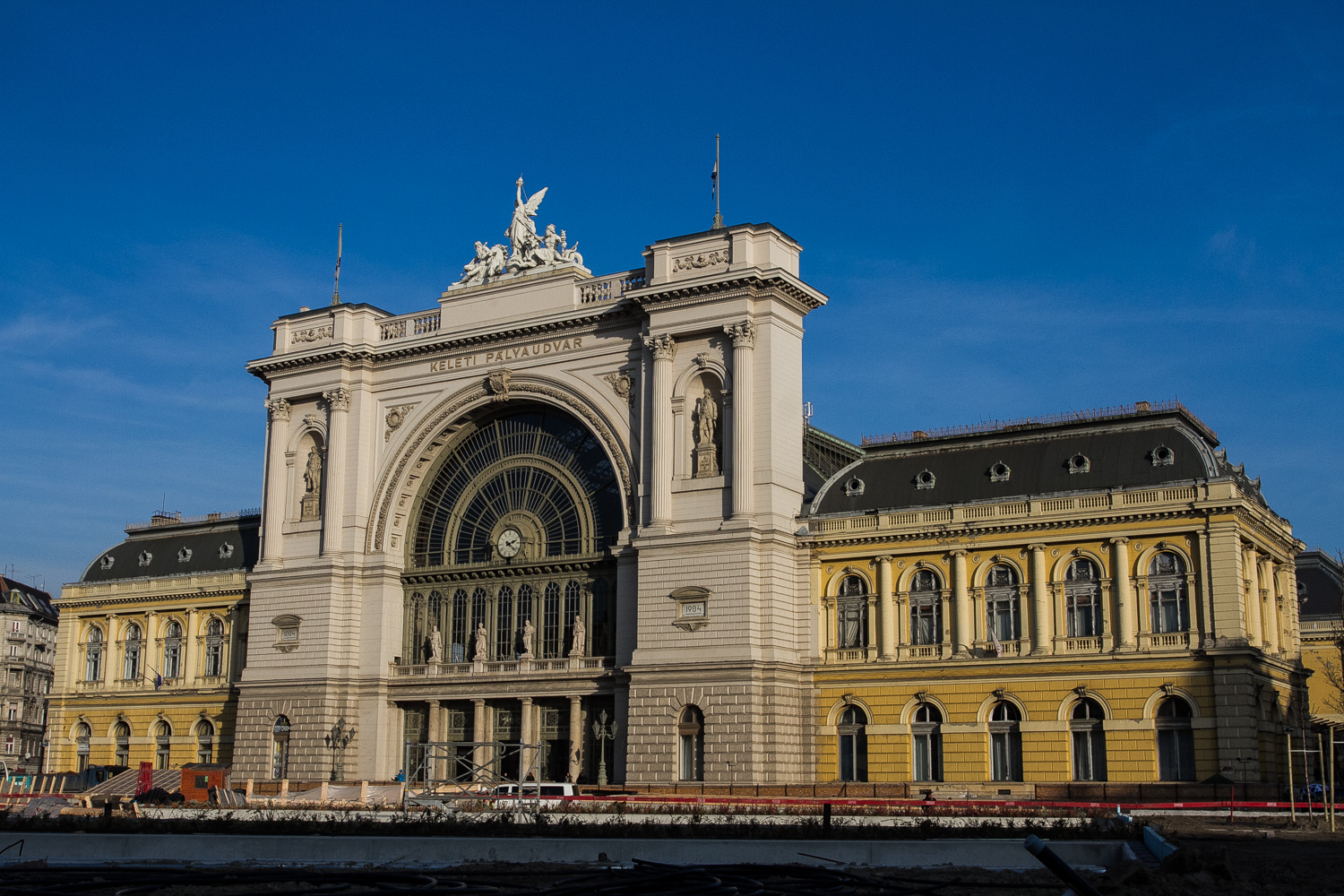In December 1868, the Budapest government decided that due to the growth of traffic and the number of passengers, the city needed a central railway station (the process wasn’t too hasty, as it took three years for the proposal to even be considered by the national assembly). Similarly to Nyugati Railway Station, the first plans envisioned placing the new rail center directly on the
Grand Boulevard: it was supposed to be built at the intersection of today’s Rákóczi Avenue, and the Boulevard, opposite the former National Theater.
Blaha Lujza Square was also considered, but to take the railways over there from Józsefváros would have cost a monumental amount of money, as it required the construction of a viaduct over the streets.

Before the large-scale construction could have started at the customs house on Kerepesi Road (today’s Baross Square), an economic downturn thwarted these plans, and significantly delayed the entire project, which only started in 1881. Chief Engineer Gyula Rochlitz was the designer, while the steel structure of the station was developed based on the ideas of bridge-building engineer János Feketeházy. According to the study plans, the trains would have arrived at the reception hall on the top floor, while the luggage traffic was planned to be implemented downstairs, where they also planned to locate a post office and coffeehouses. The final design implemented on Kerepesi Road echoed almost all of the original plans. There were some differences, like the lack of a connecting baggage tunnel; plus, as the traffic of the streets and the station were on the same level, instead of a grand staircase, the waiting halls were directly joined with the arrival and departure halls, while the café also became smaller.

To gain inspiration, Rochlitz visited many European metropolitan railways stations during his study trips abroad; this is why the eclectic main building, which was finally handed over to the public in 1884, shows similarities to Berlin’s Lehrter Bahnhoff. Besides its beauty, the main hall also impressed the public with its imposing dimensions: the whole station stretched across 16,800 square meters, while the covered hall was 180 meters long, 42 meters wide, and 31.4 meters tall. Upon its opening, the rail tracks were able to handle the traffic of 52 trains a day. The lobby was decorated with Mór Than’s wall painting, and frescos from Károly Lotz, while the statues of James Watt and George Stephenson stood on the two sides of the façade. Above them, nearly 32 meters above the ground, stands the towering figure of Steam, born from the deities of Water and Fire.

People admired the electric lighting that was a novelty then, and was provided by 70 arc-lamps made by the Ganz factory, completed by a further 664 incandescent light bulbs. Unlike Nyugati Railway Station, Keleti didn’t have a grand opening ceremony when it was handed over to the public on August 16, 1884 – the first train that left the station went to Miskolc. The press loved the station, and said the building was worthy of Hungary and Budapest.

The reason it was renamed as Keleti (which means “Eastern”) station in 1892 is simple. On the one hand, it was due to its geographical location within the city; on the other hand, it connected the city with Transylvania and the northern Balkans – both located east from the Hungarian capital. By that year, MÁV (Hungarian State Railways) annexed the Austro-Hungarian Railway Company, which meant that their station also became a state railway, so it was irrelevant to call it a “central” station.

In the early years and decades, the station went through only a few alterations. Before World War I, the number of tracks was broadened, and a second locomotive depot was built, with an added repair shop. During the war, railways had to serve military needs, thus the previously started expansion works of Budapest’s railway stations were all halted. The traffic of Keleti fell significantly after the war, and it only went back to normal after about 15 years. Overhead lines were built above the tracks during the early 1930s, then the station’s traffic reached its peak of the time. The station’s most memorable accident happened in December of 1940, when a train wasn’t able to stop because of a brake failure while reversing into the hall, knocking the blocking bumper out and rolling through the front gate to Baross Square, where it stopped on the front stairs. Fortunately, no one was hurt.

Significant construction happened during the restoration that followed the station’s thorough destruction during World War II. Until 1945, a swimming pool operated at the square in front of the station, serving air-defense purposes. The building got several rough hits during the war: the halls were all in ruins, and the arrivals area was burned out. It took years to finish the works, during which today’s international ticket offices were built.

The consequences of the war meant significant changes in travel needs, so up until the ’70s, Keleti had to transport and receive an amount of passengers far beyond its capacities. The 1960s brought further alterations: a restaurant was established, a new clock was added into the façade, and most importantly, by the end of the decade, with the construction of metro line M2, the underpass system that connects the metro and the railway station was built – accordingly, information desks and ticket offices were located on the level of the underpass, from whence a wide staircase led to the platforms.

The five existing tracks of the main hall were reduced to four during the 1980s, and following further renovations, the fully automated rail-switching system started to operate in the building as it became a listed monument. The entire roof structure was replaced, and was modernized by 2004; the inner renovations were finished by 2008. Due to the construction of metro line M4, Baross Square in front of Keleti was “decorated” with cordons for long years; meanwhile they finished the renovation of the façade. The Keleti Railway Station stop of the green metro line was inaugurated on March 28th, 2014.

Today, Keleti Railway Station is the busiest transportation hub of Hungary, with 410 trains arriving and departing every day, and the track conditions are also the best here.




